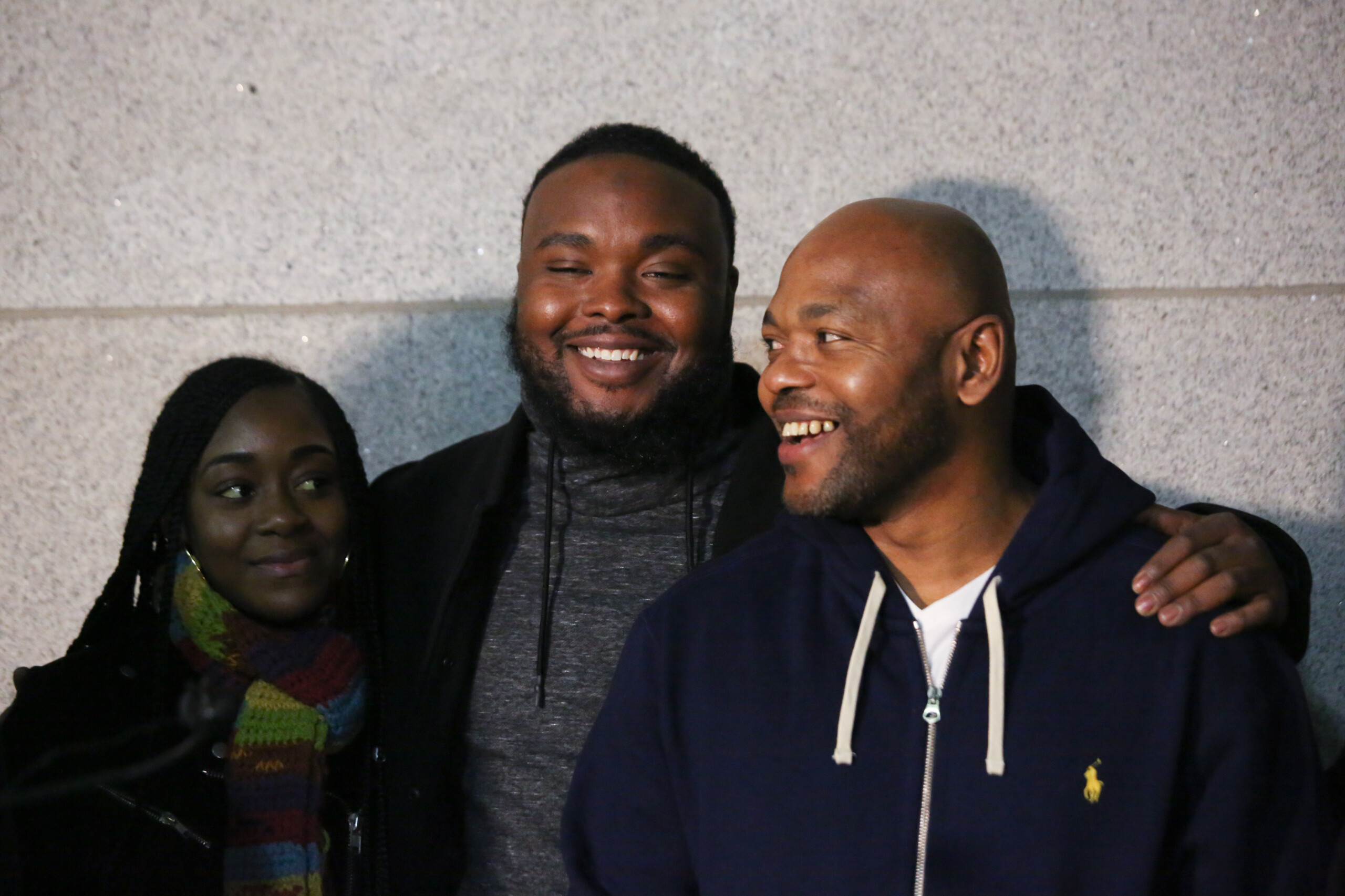Clarence Shipley
 Clarence Shipley spent 27 years in prison for a murder he did not commit.
Clarence Shipley spent 27 years in prison for a murder he did not commit.
Clarence was convicted in 1992 of killing 29-year-old Kevin Smith during a late-night robbery in Cherry Hill on October 25, 1991. Smith had been walking with two people when the robbery occurred, and one of them, “Witness G,” told police two days after the shooting that the shooter was Larry Davis. Police obtained a picture of Larry Darnell Davis – not knowing that Witness G had been referring to Larry Reginald Davis. Unsurprisingly Witness G did not identify Larry Darnell Davis as the shooter in a photo lineup.
Clarence became a suspect when police arrested Allen Scott for several car thefts. Scott said he knew Shipley from the neighborhood and that Shipley was the shooter. Witness G then identified Shipley as the shooter in a photo lineup.
Shipley turned himself into police but proclaimed his innocence from the beginning, saying that he was elsewhere during the shooting. Police did not investigate the alibi, nor did they follow up on additional tips that Larry Davis was the shooter. Shipley was convicted based solely on the testimony of Witness G and Allen Scott, despite testimony from several alibi witnesses and testimony that he was left-handed (while the shooter was right-handed).
Shipley challenged his conviction repeatedly over the years but was denied relief in the courts at every turn. In 2014, his family hired a retired BPD homicide investigator to review the case; the investigator developed promising evidence and came to believe that Shipley was innocent.
He then presented the case to Michele Nethercott of the University of Baltimore Innocence Project Clinic (UBIPC), a joint project of the University of Baltimore Law School and the Office of the Public Defender, and an affiliate of the Mid-Atlantic Innocence Project (MAIP).
Nethercott and a MAIP investigator worked the case extensively, developing important evidence of Shipley’s innocence but lacking the necessary evidence to prevail in court. Nethercott therefore presented the case to the CIU at the Baltimore City State’s Attorney’s Office, which is part of a federally funded partnership with MAIP and UBIPC to collaboratively investigate potential wrongful conviction cases. The CIU investigation developed several new witnesses who proved Shipley’s innocence and the guilt of Larry Reginald Davis.
“Clarence Shipley’s case is yet another example of why it is so important for prosecutors to take innocence claims seriously, said Nethercott. “Without a real Conviction Integrity Unit to collaborate with me on this case, Clarence would be spending the rest of his life in prison for something he didn’t do.”
The reinvestigation of Shipley’s case at the CIU was conducted by Brian Ellis, who started at the CIU in August and whose position was funded by MAIP through a grant provided by the Office of Justice Programs at the Department of Justice. Shipley’s exoneration is the first funded by the grant but the fourth involving CIU collaboration with MAIP and/or UBIPC.
Clarence was exonerated of all charges on December 18, 2018.